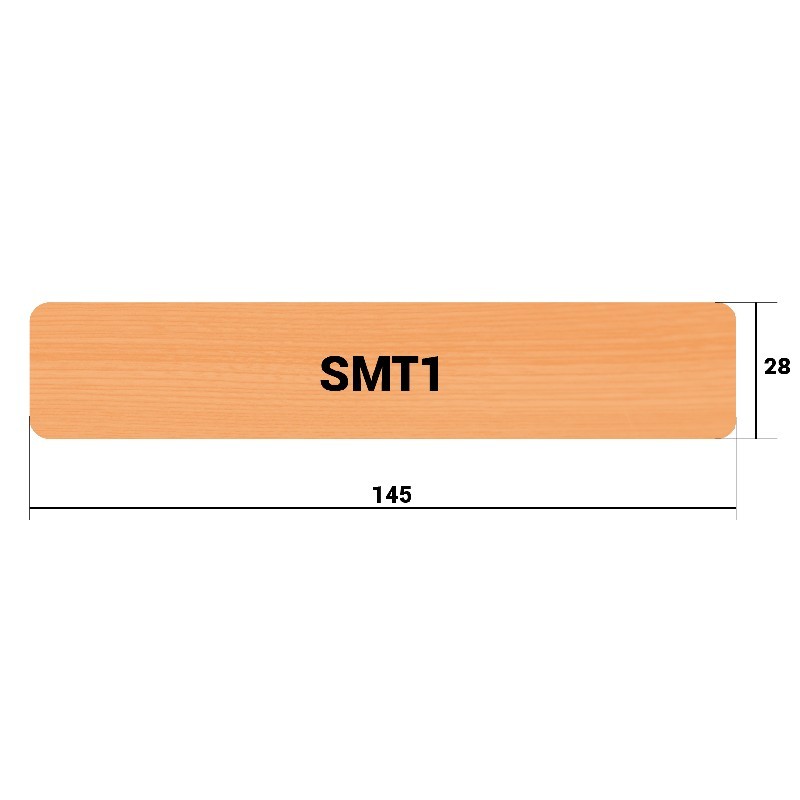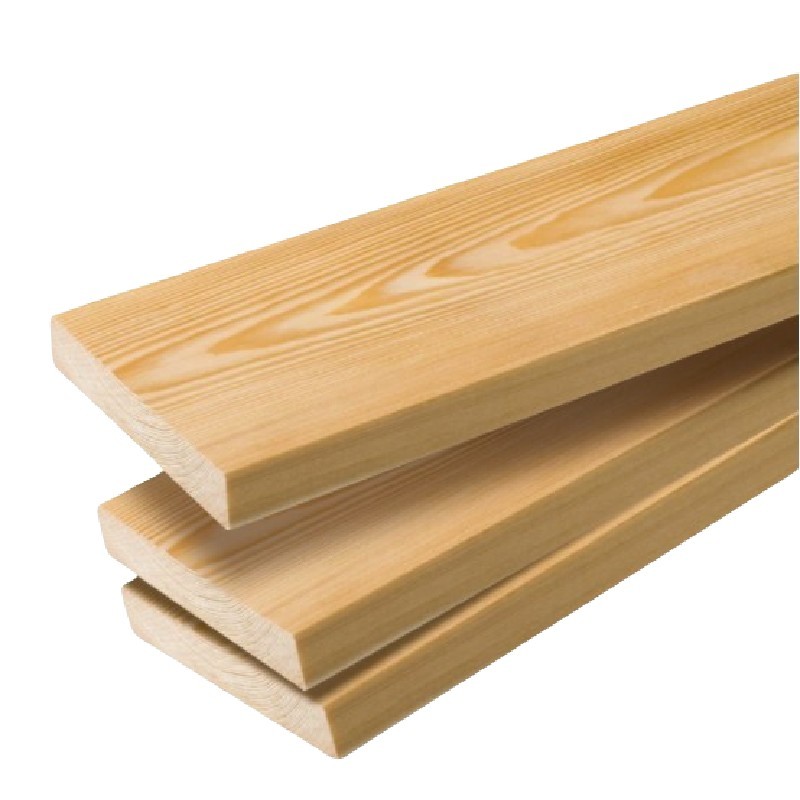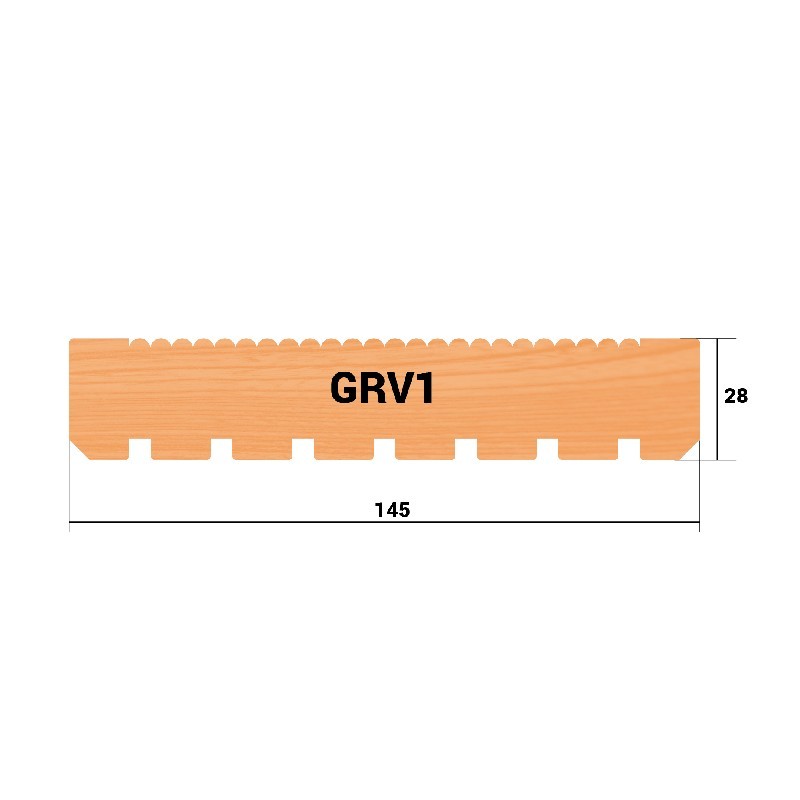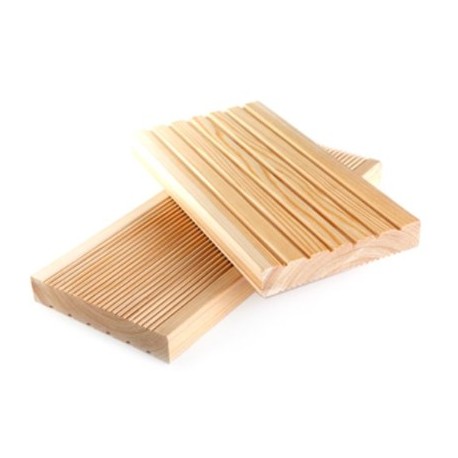Larch timber has a number of beneficial natural qualities that make it ideal for decking and outdoor areas. The beautiful appearance and impressive durability make it a popular choice for architects and construction companies, as well as homeowners.
Why is larch such a great choice for decking? Many UK residents choose larch wood for their outdoor needs because it’s affordable but at the same time very hard-wearing. In fact, larch is one of the hardest coniferous woods available. It is also aesthetically pleasing. The gorgeous golden hues and fine, straight-grained texture give it lots of character.
Let us take a deeper look at the pros and cons of larch timber, its qualities, treatment options, and more.
Some of the greatest benefits of using larch decking boards for your next project
Durability and scratch resistance
Larch trees are native to cold climates with harsh winters. The extreme weather conditions cause the trees to grow slowly, leading to high density (greater than spruce and pine, for example). In fact, while larch is technically a softwood, it’s harder than some hardwoods. This makes it more resistant to knocks, scrapes and bumps than other softwoods.
Insect, rot, and decay resistance
Due to its high resin content, larch has natural insect-repelling qualities. In addition, its high density protects it from moisture and it can be left without staining or painting. However, many choose to apply a preservative stain for UV protection.
Workability
In the case of kiln-dried larch, its strength doesn’t mean it’s difficult to work with. It has very good drilling, machining, and glueing properties. You will find it easy to work with.
Affordability
Kiln-dried larch is more affordable than rare hardwoods such as Balau, making it ideal for people wanting to keep costs low while achieving better results than simple pine or spruce decking.
All Your Larch Decking Questions Answered
If you need more information about larch decking boards, the section below will answer some of the commonly asked questions for you.
Is larch decking slippery?
Larch decking is no more slip-prone than any other decking. That being said, you should clean your deck every once in a while to remove leaves, dirt, or mould, which combined with water, can create a slippery surface.
How long will larch decking last?
Larch timber’s natural toughness gives it a life expectancy of over 50 years.
How to maintain larch decking?
To keep your deck clean, you can use a pressure washer. However, always use low pressure, moving in a sweeping fashion in the direction of the grain without getting too close.
You can use a neutral pH soap with a soft cloth or large sponge to remove any dirt or resin build-up.
Applying a woodcare product and renewing it regularly will protect your larch decking boards from the sun, rain, mould, etc.
If your decking’s condition and colours have already started to deteriorate, apply a strong wood cleaner to restore it.
Does Larch decking need treating? Is it better to use treated or untreated boards?
With larch decking, treatment or sealing is not strictly required. Whether you choose treated or untreated boards depend on your aesthetic preferences. It is true, however, that treatment protects the wood and further prolongs its life.
How do I keep larch from going grey and keep my golden hues?
If you’d rather preserve your decking in its original colours, you should protect it from UV and water. To do so, apply one of the following:
- Saturator - It’s a water-based product that impregnates the wood without leaving a film. It gives a matt to a satin finish and could either be transparent or coloured. It needs to be re-applied every 1-2 years.
- Oil - Oils also penetrate the wood to protect it from the elements. They leave a matt, oily finish which enhances the colour. Note that linseed oil is not recommended for outdoor use as it leads to darkening. Oils require the most frequent re-application.
- Stain - It forms a thin film on the surface of the wood and gives a matt, satin, or shiny finish. It does not ruin the grain of the wood. Stains can be coloured or colourless. Stain requires less frequent maintenance than oils and saturators.
How do I age (weather) larch decking?
A lot of people embrace the natural greying process. It doesn’t affect the structural integrity of larch boards, as it only occurs on the surface. If you prefer your larch decking weathered, you can either refrain from treating it or apply a transparent product.
Can I stain larch decking?
Yes, you can, as long as moisture levels are below 18%. Luxury Wood’s kiln-dried larch is dried to 13-19%. Stain will absorb into the wood surface and create a more natural look than paint.
Can I paint larch decking?
Yes, you can. Make sure that moisture levels are below 18%. Luxury Wood’s kiln-dried larch is dried to 13-19%. However, note that paint acts as a top layer and the surface needs to be primed. Also, paint is not flexible and will wear off or possibly peel over time.
What fire class is kiln-dried larch?
Untreated larch timber is usually classified as Euro Class D (Class D refers to products capable of resisting, for a longer period, a small flame attack without substantial flame spread).
What are the larch qualities and standards?
The European standard used to determine larch quality is called BS EN 942. It superseded standard BS1186. Quality is noted in Grades A, B, C, and D, with A being the highest. All Luxury Wood larch products are graded to BS EN 942, Grade AB (high grade, almost knot-free).
Kiln-Dried Larch Decking Products Supplied by the Luxury Wood Company
The Luxury Wood Company offers two types of kiln-dried larch decking boards, each with its distinctive qualities: Smooth and Grooved.
Smooth boards have a universal application. They create an even surface, are heel-friendly, and are easier to clean. Since they collect less dirt and debris, they’re a good choice for busier areas. They’re also suitable for pushchairs, wheelchairs, or bicycles.
Grooved boards can help with added grip and water runoff. However, they need to be installed at the proper slope. Grooved boards can also be used in combination with smooth ones, to create contrast and interesting patterns. Contrary to popular belief, grooved boards are not intended as anti-slip.
| Drawing | Image | Product Name | Dimensions | Price per m² |
 |  | SMOOTH KILN-DRIED LARCH DECKING | 145MM X 28MM | £45.75 per sqm |
 |  | GROOVED KILN-DRIED LARCH DECKING | 145MM X 28MM | £45.75 per sqm |
Notes:
- Clear treatments such as water-repellent oils and preservative - they will considerably slow down the greying process;
- Semi-transparent stain, water-based or oil-based - these will give your decking a slight colour change;
- Solid-colour stain - use these to completely change the colour and offer the highest level of protection.


